Kim Potter and Derek Chauvin: Parallel trials of police officers in deaths of Daunte Wright and George Floyd

- Oops!Something went wrong.Please try again later.
As the long-anticipated trial of Kim Potter got underway on Wednesday, comparisons were instantly drawn with the murder trial of Derek Chauvin just eight months earlier.
In both cases, veteran white police officers killed Black men during deadly arrests in Minneapolis, Minnesota, sparking protests calling for racial justice and an end to police brutality against Black people.
Ms Potter is charged with first degree and second degree manslaughter after she shot dead Daunte Wright back in April when she pulled him over for a traffic stop.
The Brooklyn Center police officer of 26 years appeared to mistakenly pull her firearm instead of her taser, firing one fatal shot that cut the young father-of-one’s life short.
Chauvin, meanwhile, was found guilty of George Floyd’s murder after the officer of 18 years knelt on the Black man’s neck for more than nine minutes as he desperately gasped for air during an arrest over a counterfeit $20 bill.
On Wednesday, both the prosecution and the defence in Ms Potter’s trial mirrored the language used in Chauvin’s when they gave their opening statements about the events that led to Mr Wright’s death.
Jurors were also played footage of the 20-year-old’s killing – a sign that video would again be key evidence.
And several familiar faces were seen on the legal teams battling it out in Hennepin County Courthouse.
What remains to be seen is whether the almost all-white jury will reach a similar verdict when they decide Ms Potter’s fate.
Follow the live updates of Kim Potter’s trial
The killings
Parallels have been drawn between the two cases ever since Mr Wright was shot dead back on 11 April.
At the exact moment the 20-year-old was killed, Chauvin’s trial was underway just 10 miles away in Hennepin County Courthouse.
Tensions were already at boiling point in Minnesota due to Chauvin’s trial as Mr Floyd’s murder on Memorial Day 2020 marked the latest in a long line of police killings of Black people in America and fuelled months of Black Lives Matter protests.
Ahead of the trial, security was ramped up in Minneapolis, businesses boarded up and Hennepin County Courthouse became a fortress with metal fencing erected around it.
Protests erupted in the city once again following Mr Wright’s death and Ben Crump, a prominent civil rights attorney representing both the families of Mr Floyd and Mr Wright, described his killing as an “execution”.
Nine days after Mr Wright was shot and killed, jurors returned their verdict in Chauvin’s case, finding him guilty of all charges.
Now, a jury will decide the fate of Ms Potter in the very same courthouse.
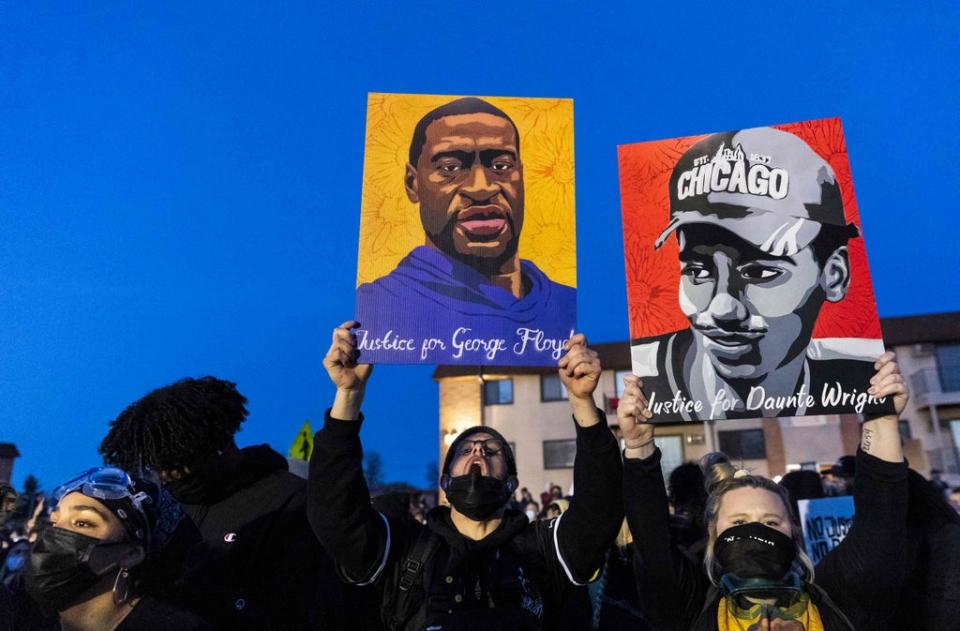
The opening statements
In opening statements on Wednesday, prosecutors said former police officer Ms Potter “betrayed the badge” when she shot and killed the Black man while the defence blamed Mr Wright for failing to comply with the commands of law enforcement – setting up the opposing version of events that jurors can expect to hear over the coming weeks.
Prosecutor Erin Elridge argued that, as a longstanding police officer, Ms Potter was trained to deal with such situations and had gone through extensive training in the risks of using the wrong weapon over the years.
When she pulled her weapon and shot Mr Wright, she violated this training and her oath “ââto protect life, not to take life”.
She “betrayed a 20-year-old kid”, Ms Elridge said.
“This is exactly what she had been trained for years to prevent. But on April 11, she betrayed her badge and she failed Daunte Wright,” she said.
“We trust them to know wrong from right, and left from right.
“This case is about an officer who knew not to get it dead wrong, but she failed to get it right.”
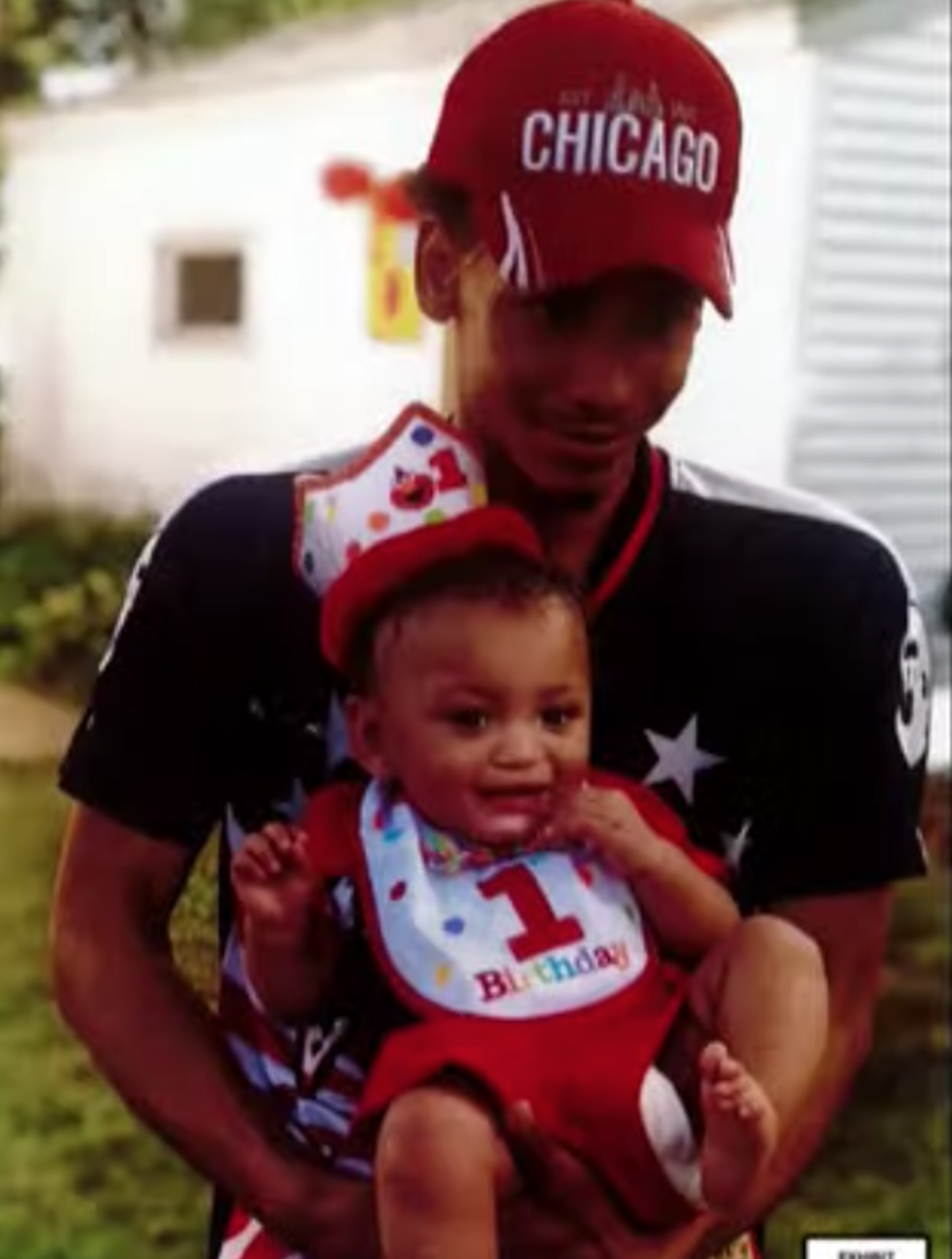
In the opening statement for the defence, attorney Paul Engh instead argued that Ms Potter is “human” and made the “mistake” in the heat of the moment of the situation.
“We are in a human business. Police officers are human beings. And that’s what occurred,” said Mr Engh.
He also sought to shift the blame onto Mr Wright for his death – saying he would still be alive if he had followed the officer’s commands.
“All he has to do is stop and he’d be with us,” he said, adding all Mr Wright “had to do was surrender”.
Mr Engh also said Ms Potter was trying to save the life of her colleague who he said could have been injured as Mr Wright attempted to flee. He claimed the officer was right to be concerned that Mr Wright may be armed due to an outstanding warrant on a firearms charge.
Both the prosecution and the defence appeared to set the stage for similar lines of argument to those heard during Chauvin’s trial.
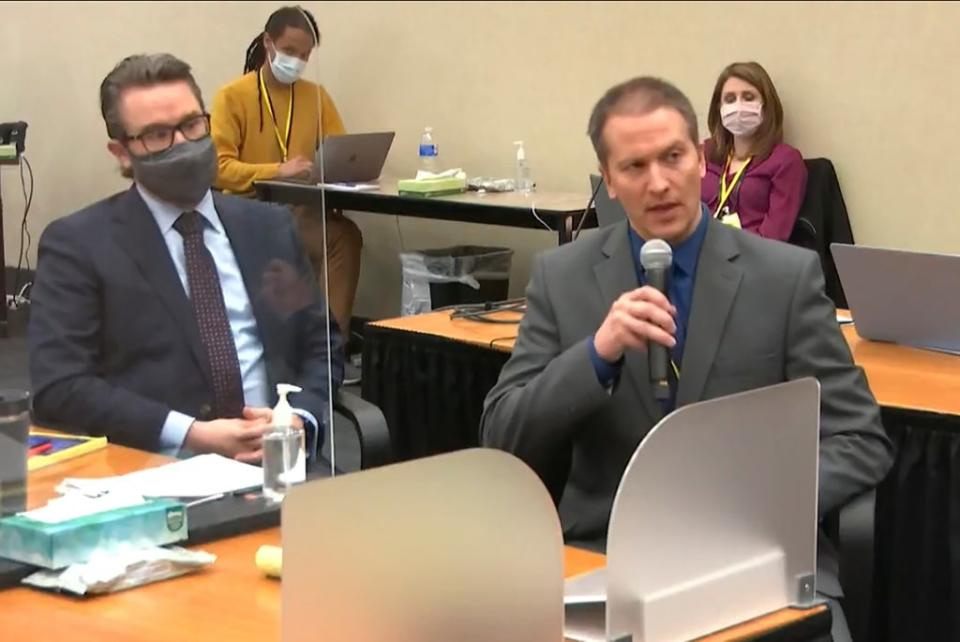
In fact, Ms Elridge’s language was almost identical to that used by Assistant Attorney General Jerry Blackwell during the state’s opening arguments in that case back in March.
“You will learn that on May 25 2020 Mr Derek Chauvin betrayed his badge when he used excessive and unreasonable force upon the body of Mr George Floyd,” he said.
During the murder trial, prosecutors also argued that Chauvin violated his training, with the court hearing from state witnesses how the experienced officer was trained to “stay away from the neck when possible” when restraining a suspect.
Meanwhile, Chauvin’s defence attorney Eric Nelson had put forward a similar argument in his opening argument that his client gave a human response to the situation.
He argued that the officer had more to deal with than only Mr Floyd as a large crowd gathered around the incident.
And the defence similarly tried to pin the blame for the tragedy on the victim, arguing that Chauvin had no choice but to use force because Mr Floyd’s refusal to get in the police car was a form of resisting arrest.
The legal teams
Several familiar faces from Chauvin’s trial have returned to the Hennepin County Courthouse for Ms Potter’s trial.
Ms Eldridge, Minnesota’s assistant attorney general who delivered the opening statements on behalf of the state on Wednesday, was also a presenting attorney in Chauvin’s murder trial.
Other members of the prosecution’s team include Matthew Frank and Joshua Larson who both also worked on Chauvin’s case.
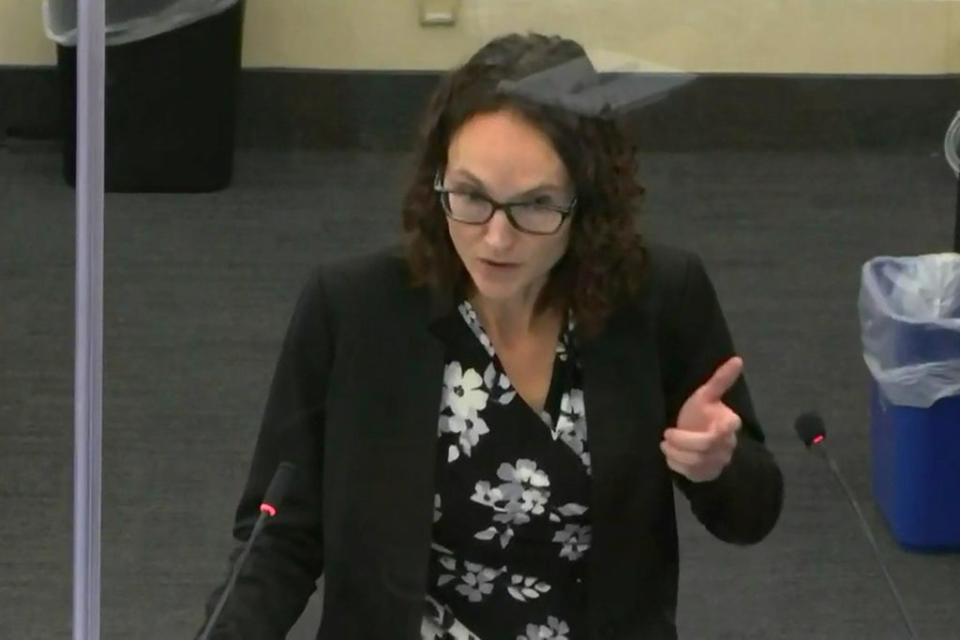
For the defence, Ms Potter is being represented by attorney Earl Gray, who is also representing Thomas Lane – one of the three other police officers still awaiting trial together on charges in Mr Floyd’s death.
Mr Gray and his co-counsel Paul Engh both worked on the legal team for another Minnesota police officer charged in the killing of another Black man, Philando Castile.
St Anthony police officer Jeronimo Yanez was charged with second-degree manslaughter and dangerous discharge of a firearm after he shot dead Mr Castile during a traffic stop in Falcon Heights, Minnesota, in 2016.
He was found not guilty on all charges.
The role of video
Bystander video of Mr Floyd desperately crying out “I can’t breathe” as he lay dying under Chauvin’s neck sent shockwaves across the globe and became a critical part of the trial of the officer.
As the state rested its case, prosecutors simply told the jury: “You can believe your eyes.”
Video will once again play a pivotal role in Ms Potter’s manslaughter trial as the shooting and the events leading up to it were captured on the body cameras of both the officer and her colleague – rookie Officer Anthony Luckey – as well as the dashcam of their patrol car.
On day one of the trial on Wednesday, the court was shown Officer Luckey’s bodycam.
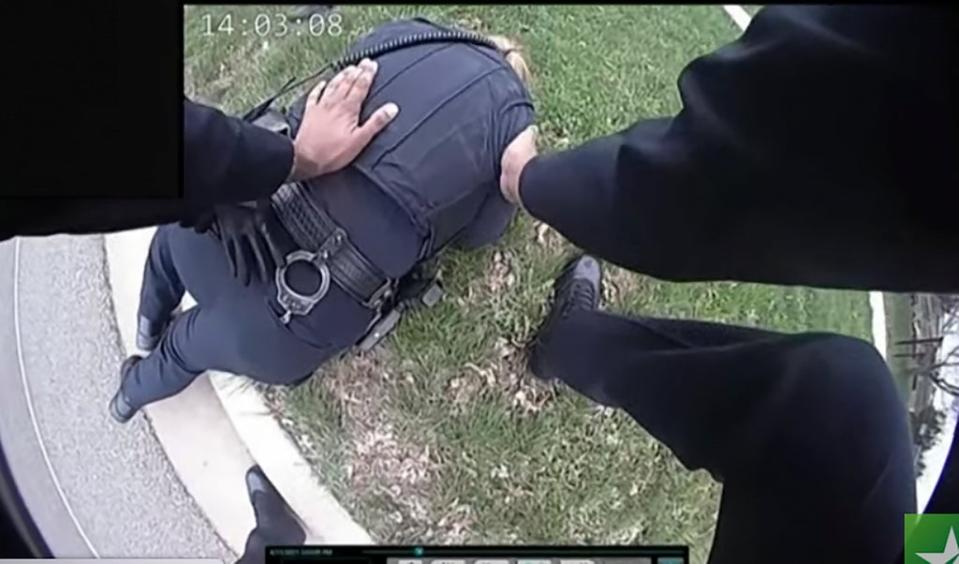
In the footage, Ms Potter is heard shouting “taser, taser” before she shot Mr Wright.
She is then heard realising she has used her firearm instead of her taser: “I just shot him. I grabbed the wrong f***ing gun. I shot him, oh my god.”
The footage shows the officer slumped face down on the grass after the incident.
The court was also shown separate bodycam footage of the moment Mr Wright’s mother Katie Bryant asked officers why her son had been shot after learning of his death.
“You guys shot him, why?” she cried.
What differences can we expect?
Unlike Chauvin who did not take the stand, Ms Potter is expected to testify at her trial.
Her defence attorney told jurors in the opening statement that she would tell the court about the “profound impact” the shooting had had on her life.
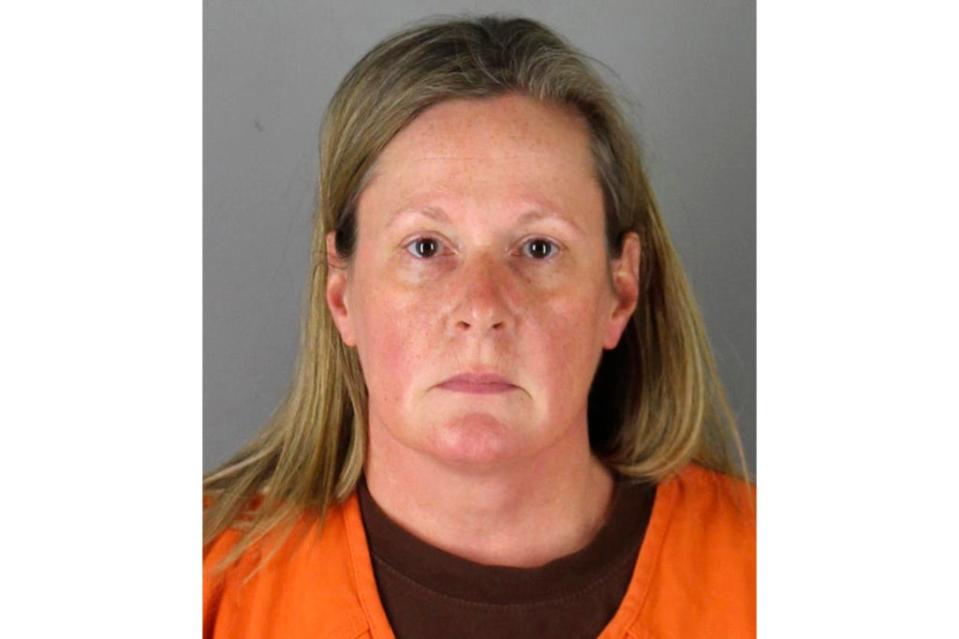
Meanwhile, the charges are also markedly different.
Ms Potter is charged with first-degree manslaughter and second-degree manslaughter. Chauvin was convicted of second-degree murder, third-degree murder and second-degree manslaughter.
Prosecutors in Ms Potter’s trial have come under fire from activists and Mr Wright’s family for not seeking higher charges.
However, Ms Eldridge made it clear in opening arguments that the state is not arguing – and does not need to prove – that Ms Potter intended to kill Mr Wright.
“This case is not about the intent to kill,” she said.
“No one will say that she wanted this to happen. No one will say that she meant to shoot her gun.
“But she pulled the trigger, she shot Daunte in the chest, and she did those things without bothering to check the weapon in her hand.”
Read More
EXPLAINER: What will jurors hear about Daunte Wright?
Daunte Wright: Who was the 20-year-old Black man shot dead by Kim Potter in Minneapolis suburb?
Kim Potter trial: Who is the former Minnesota officer and why did she shoot Daunte Wright?
Kim Potter trial: YouTuber arrested for allegedly intimidating judge in Daunte Wright case

